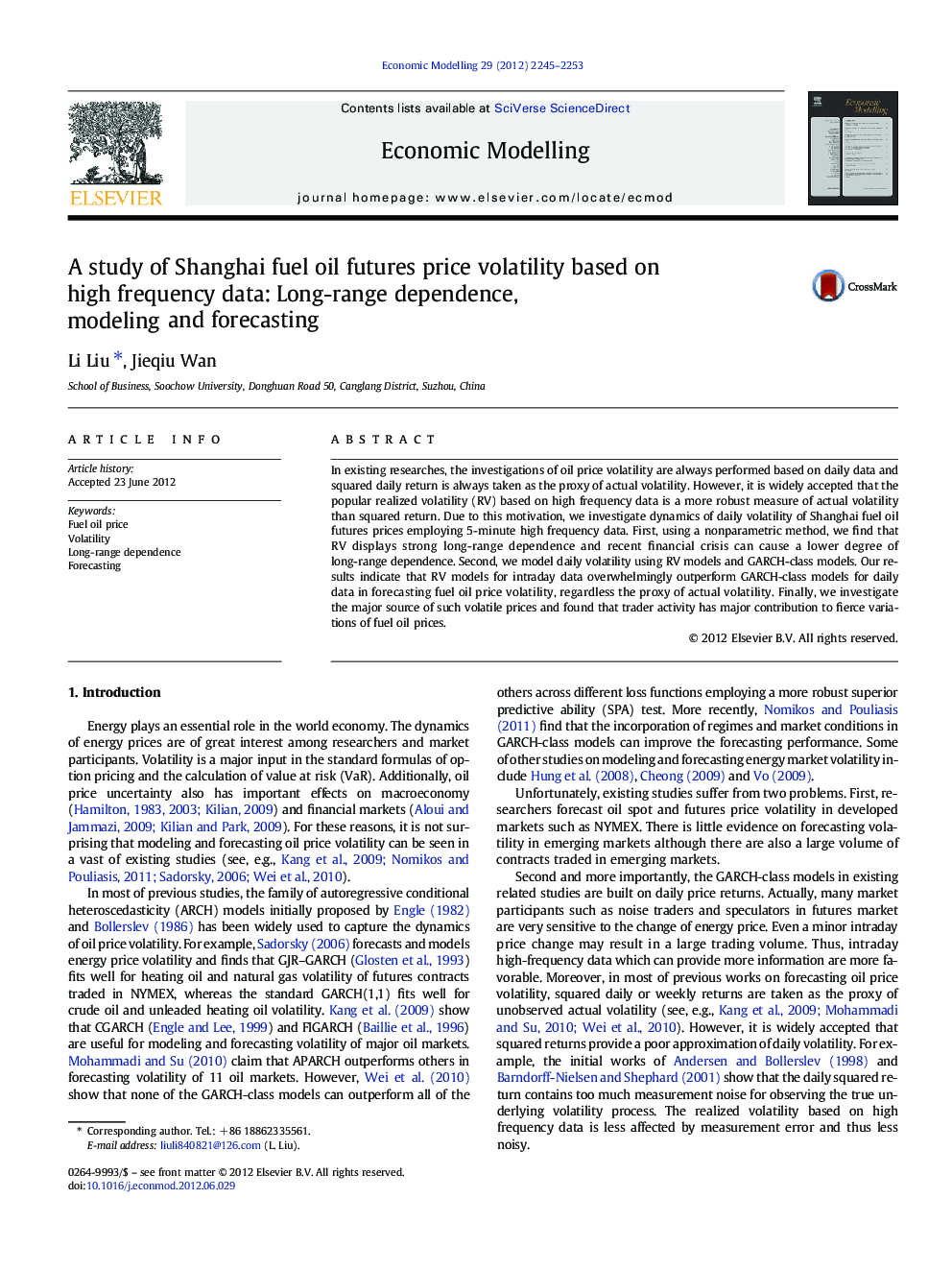| Article ID | Journal | Published Year | Pages | File Type |
|---|---|---|---|---|
| 5055078 | Economic Modelling | 2012 | 9 Pages |
In existing researches, the investigations of oil price volatility are always performed based on daily data and squared daily return is always taken as the proxy of actual volatility. However, it is widely accepted that the popular realized volatility (RV) based on high frequency data is a more robust measure of actual volatility than squared return. Due to this motivation, we investigate dynamics of daily volatility of Shanghai fuel oil futures prices employing 5-minute high frequency data. First, using a nonparametric method, we find that RV displays strong long-range dependence and recent financial crisis can cause a lower degree of long-range dependence. Second, we model daily volatility using RV models and GARCH-class models. Our results indicate that RV models for intraday data overwhelmingly outperform GARCH-class models for daily data in forecasting fuel oil price volatility, regardless the proxy of actual volatility. Finally, we investigate the major source of such volatile prices and found that trader activity has major contribution to fierce variations of fuel oil prices.
⺠Realized volatility displays significant long-range dependence. ⺠Recent financial crisis can cause a lower degree of long-range dependence. ⺠RV models have greater forecasting accuracy than GARCH-type models. ⺠The contribution of trader activity to dynamics of fuel oil price is significant.
